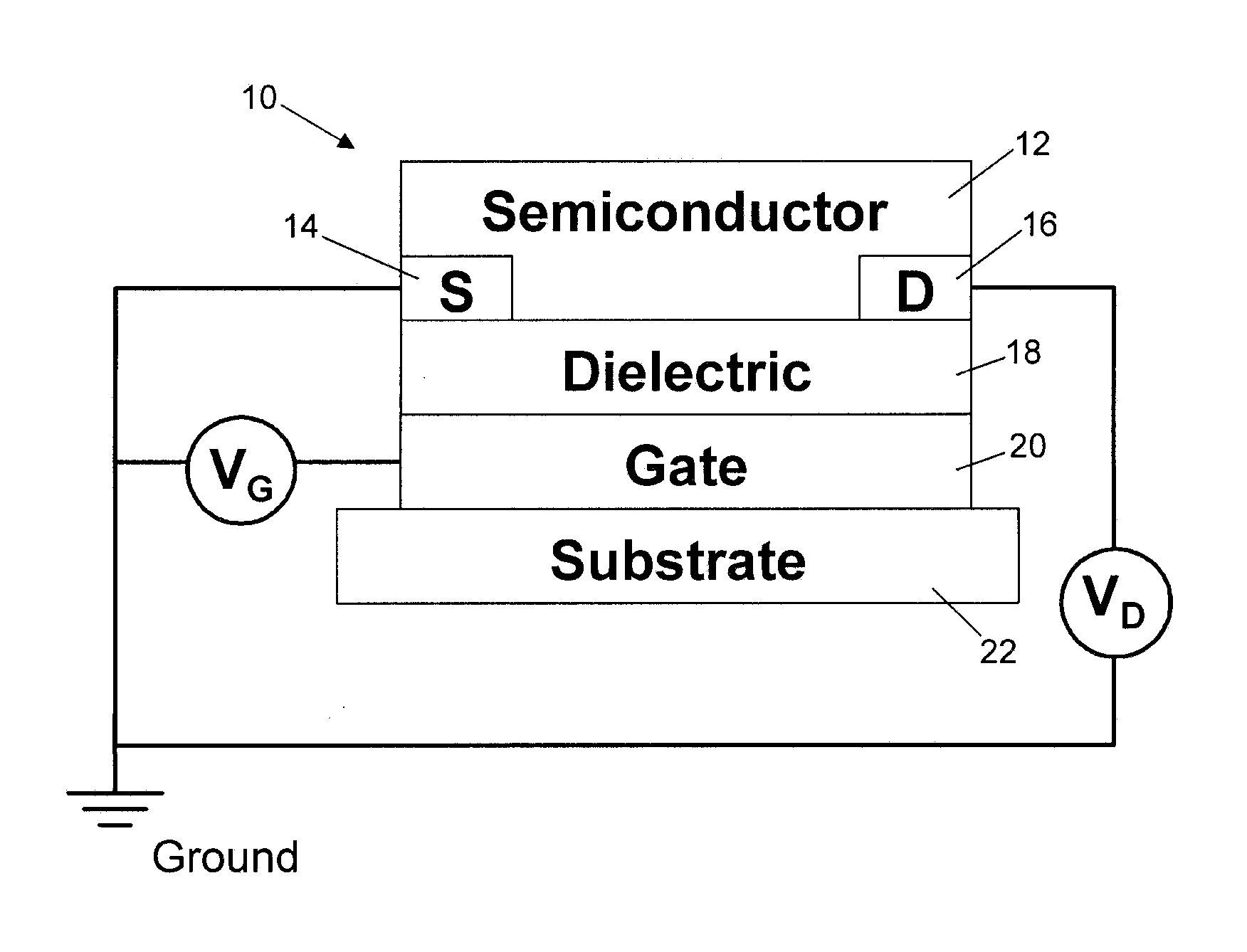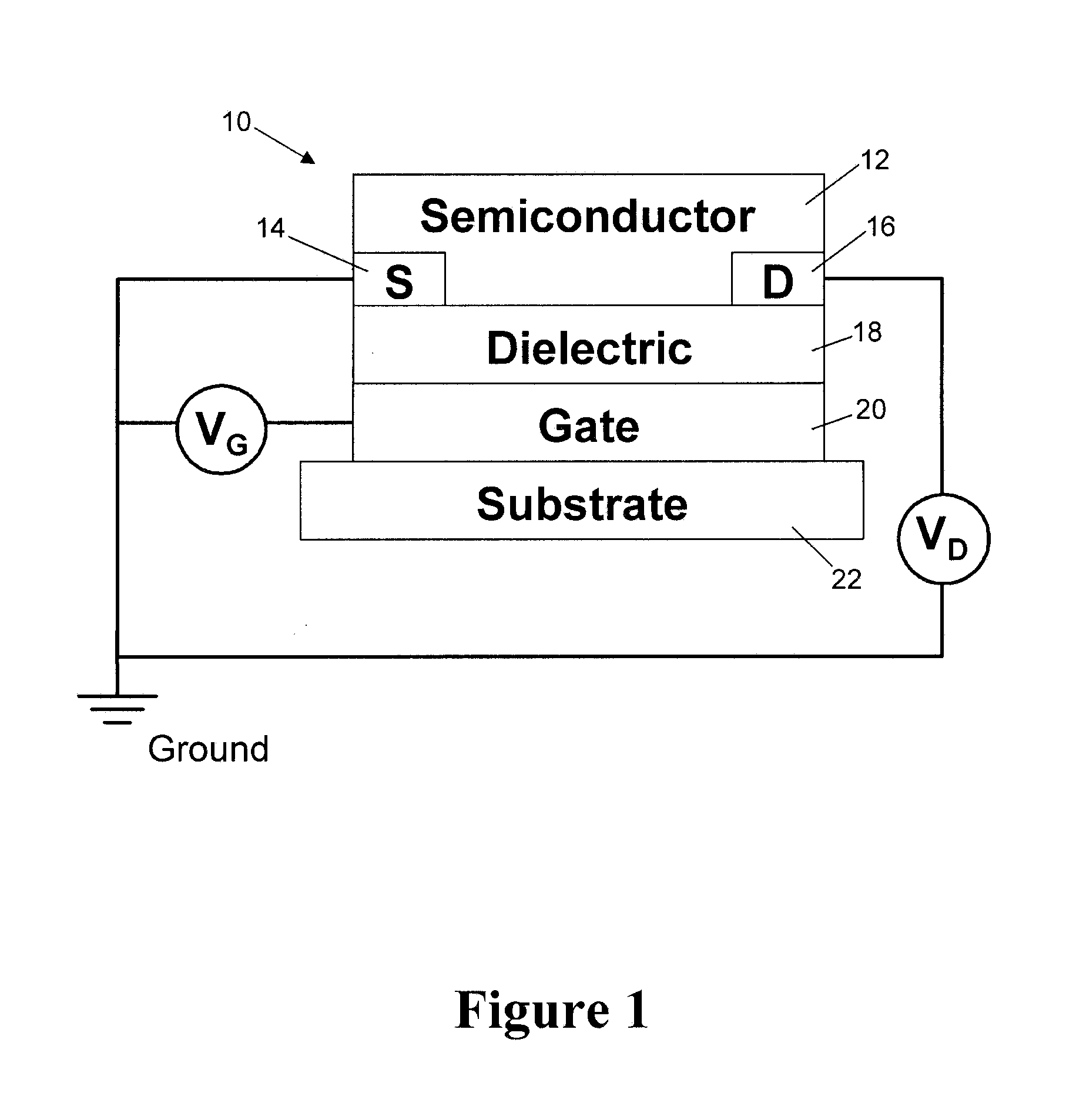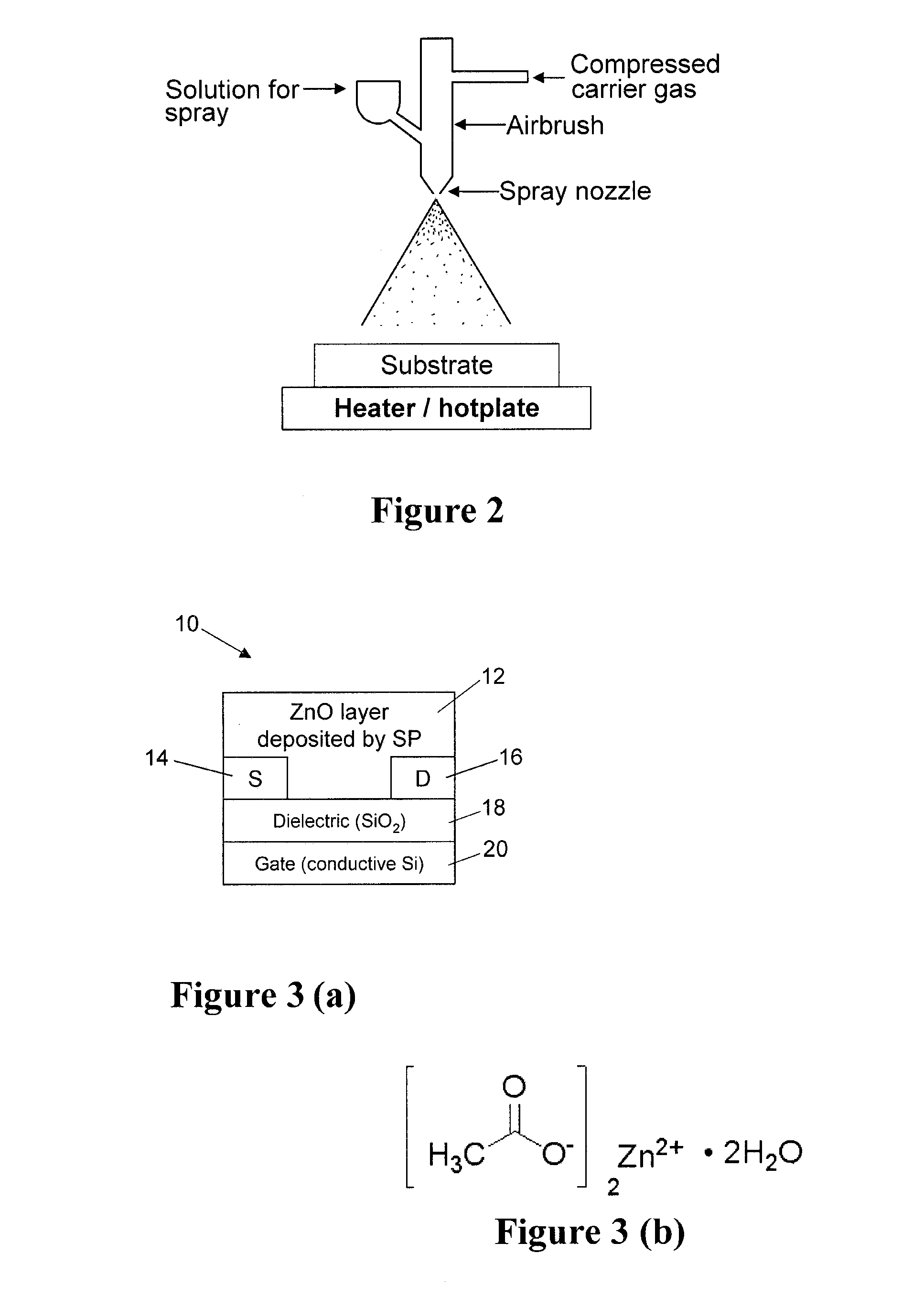Fabrication method for thin-film field-effect transistors
a field-effect transistor and fabrication method technology, applied in the direction of basic electric elements, electrical apparatus, semiconductor devices, etc., can solve the problems of limited use of a-si or state-of-the-art organic materials in the next-generation display, severe restriction on the choice of substrate, and inability to drive tfts to exceed certain dimensions, etc., to achieve the effect of improving the performance of the transistor
- Summary
- Abstract
- Description
- Claims
- Application Information
AI Technical Summary
Benefits of technology
Problems solved by technology
Method used
Image
Examples
Embodiment Construction
[0048]The present embodiments represent the best ways known to the applicants of putting the invention into practice. However, they are not the only ways in which this can be achieved.
[0049]By way of introduction, as illustrated in FIG. 1, a bottom-gate bottom-contact TFT device 10 consists of a semiconducting active layer 12 applied onto a three-terminal electrode architecture comprising a source electrode 14, a drain electrode 16 and a gate electrode 20. The gate electrode 20 is separated from the semiconductor layer 12 and the source and drain electrodes by a dielectric layer 18. In embodiments of the present invention, the semiconducting layer 12 may be an oxide or oxide-based material, and is deposited using spray pyrolysis (which may be abbreviated to “SP” herein). As will be described in further detail below, alternative device architectures, other than bottom-gate bottom-contact devices, are also possible.
[0050]The embodiments of the invention seek to address both the issue ...
PUM
| Property | Measurement | Unit |
|---|---|---|
| temperature | aaaaa | aaaaa |
| temperatures | aaaaa | aaaaa |
| temperature | aaaaa | aaaaa |
Abstract
Description
Claims
Application Information
 Login to View More
Login to View More - R&D
- Intellectual Property
- Life Sciences
- Materials
- Tech Scout
- Unparalleled Data Quality
- Higher Quality Content
- 60% Fewer Hallucinations
Browse by: Latest US Patents, China's latest patents, Technical Efficacy Thesaurus, Application Domain, Technology Topic, Popular Technical Reports.
© 2025 PatSnap. All rights reserved.Legal|Privacy policy|Modern Slavery Act Transparency Statement|Sitemap|About US| Contact US: help@patsnap.com



